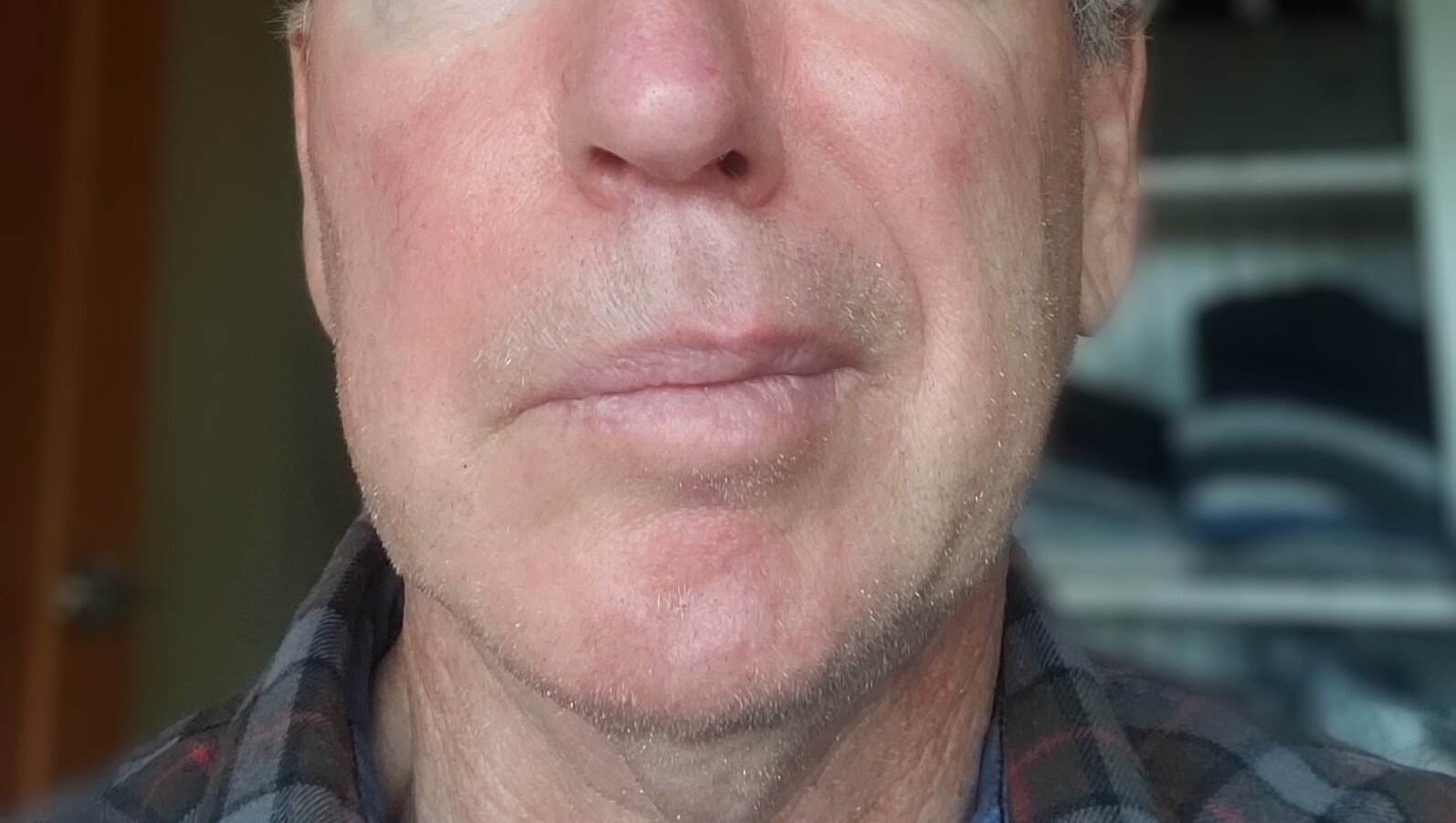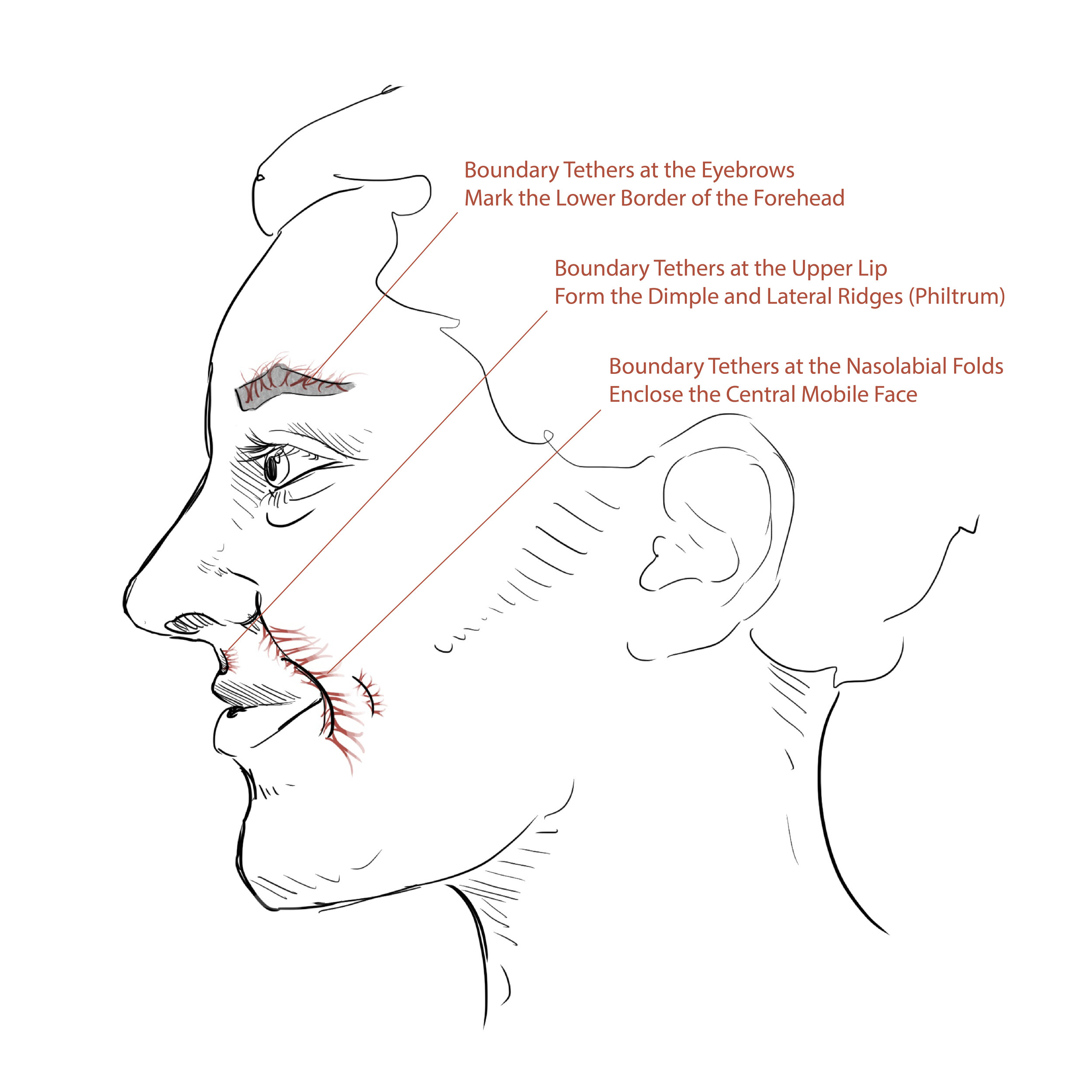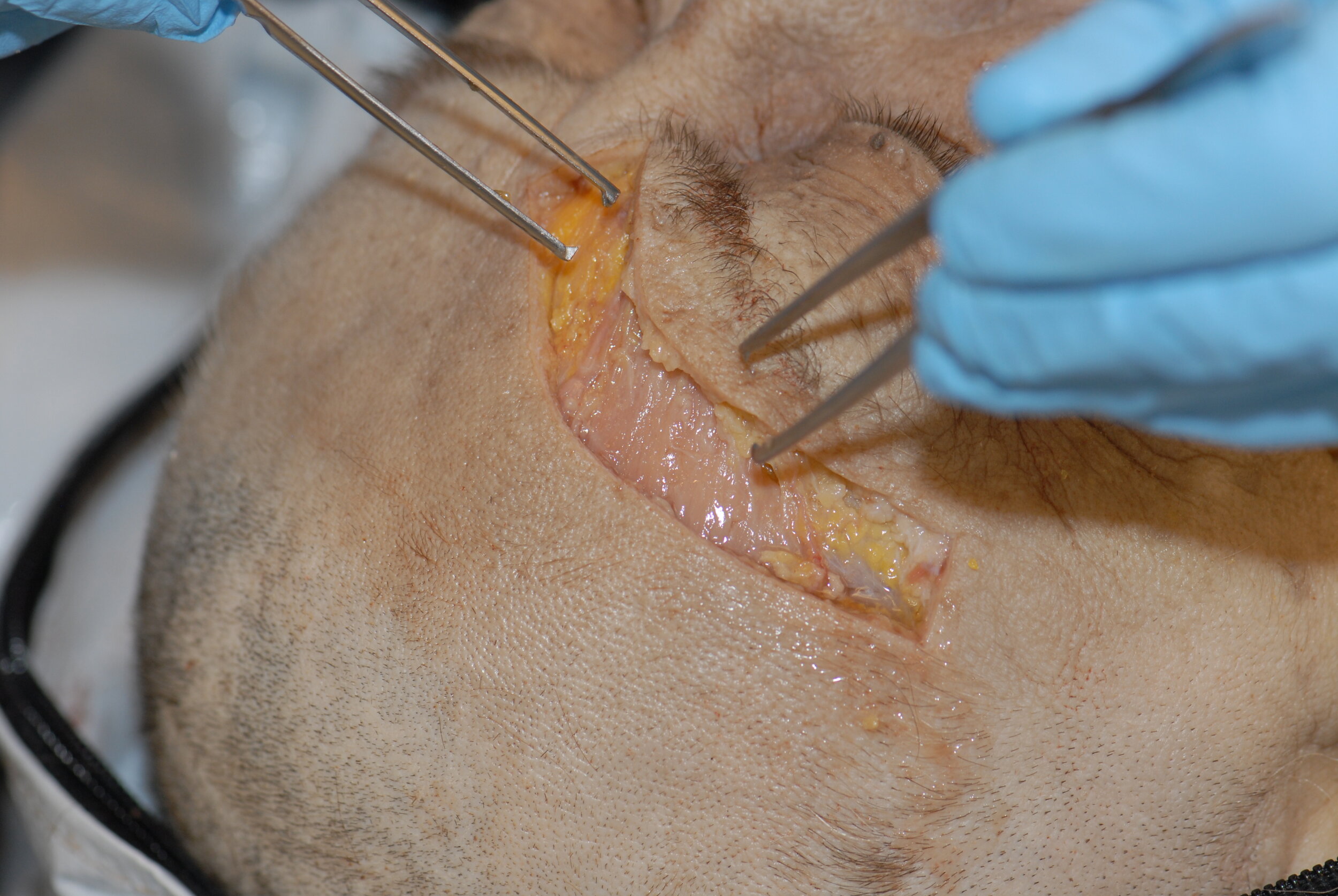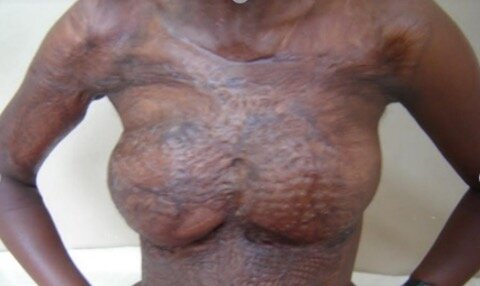Boundary/Border Tethers – upper lip, forehead, eyebrows and chest
Survey your body as an architect might, visualizing positive and negative spaces like different rooms in a house. Contours are created by infrastructure, boundaries and even light exposure. Boundary tethers separate domains of both your static and moving body, often located at the intersection of muscular fascias.
Upper Lip
Tight central upper lip tethers form the dimple (philtrum) that separates your lateral upper lip segments. Smile lines, running from each side of your nose past the corner of your mouth (nasolabial folds), are formed from dermal tethers originating at the intersection of diverging deep muscular fascial planes. These folds form the boundary between your relatively static cheeks laterally and your very mobile central face. Paralysis of facial muscles with Bell’s Palsy or Botulinum toxin can eliminate facial skin creases showing how dependent our external appearance and expressions are on the attachments between the skin and the underlying muscles and fascia.
Forehead and Eyebrows
The inferior border of your forehead, at the eyebrows, is defined by long tethers extending from the periosteum of the superior orbital bony forehead to the skin. With aging, gravity and chronic motion, these brow tethers lengthen and the brow droops. A surgeon doing a brow lift severs these anchoring tethers from the frontal bone. The eyebrows, with their follicles predominantly located in the dermis of the skin, can then move freely to almost any level of the forehead. You may have observed instances in which this type of intervention has resulted in aesthetic improvement in older people. Conversely, asymmetric or distorted brow placement may result due to abnormal reattachment of these boundary tethers after surgery.
Chest
Your chest is separated by Cinderella Layer tethers into different spaces as planes diverge above, below, between and lateral to the breasts. Maintaining these boundaries whether in art, therapy or surgery will preserve normal appearance and symmetry with movement. If, for example, the space between the breasts and superficial to the sternal bone is ignored in burn reconstruction by bridging rather than separating boundaries, normal contour will be lost. Static and dynamic planes are distorted by secondary skin graft and scar contraction forming a web between the breasts called symmastia. Border or boundary tethers form the anterior and posterior axillary folds that essentially isolate the axilla’s unique hollow shape at rest and with movement. They protect the breasts and neck from distortion as the arm travels through its full range of motion at the shoulder.
Think of the classical artist’s image of a youthful, seductive buttock turned halfway towards you and half away. It will flatten and sag with age as it loses tether support and fat volume. Boundary tethers between the buttock and posterior thighs (infragluteal fold) lengthen and loosen as we get older. The evolutionary philosopher might question whether the aesthetic contour of the youthful buttocks and posterior thighs have anthropologically encouraged procreation of our species? Functionally, as we circle the waist from the infragluteal folds to the anterior groin creases, we have a body designed for sitting, standing and bipedal ambulation.








